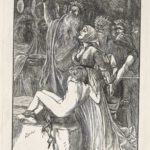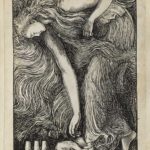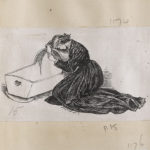Exhibition Intro ~ Map ~ Next Section
Click a thumbnail to start. There is a pause button (top right), and arrows at each side to skip forward or back.
Alice caught the baby with some difficulty, as it was a queer-shaped little creature, and held out its arms and legs in all directions, “just like a star-fish,” thought Alice. The poor little thing was snorting like a steam-engine when she caught it, and kept doubling itself up and straightening itself out again, so that altogether, for the first minute or two, it was as much as she could do to hold it.
As soon as she had made out the proper way of nursing it, (which was to twist it up into a sort of knot, and then keep tight hold of its right ear and left foot, so as to prevent its undoing itself) she carried it out into the open air…
The baby grunted again, and Alice looked very anxiously into its face to see what was the matter with it. There could be no doubt that it had a very turn-up nose, much more like a snout than a real nose; also its eyes were getting extremely small for a baby: altogether Alice did not like the look of the thing at all. (Lewis Carroll, Alice’s Adventures in Wonderland, 1865)
The bizarre illustration of Alice nursing a pig by Dalziel and Tenniel (no. 1 – see gallery above) ridicules conventions of maternity, but it is also strangely reverent. Here we see the inspiration for Alice’s famous look; she resembles a Madonna and child by the Renaissance artist Raphael, such as The Bridgewater Madonna (1508).
This section of the exhibition contains no traditional representation of the Virgin Mary with Jesus, though there is a memorable Old Testament illustration of the Finding of Moses (no. 4). We begin with familiar images of nursing women and the erotics of infancy (nos. 1–6). We then move on to other, often unexpected explorations of children’s relationships to adults. For example, there is a mother with an empty cot (no. 13), a simple and devastating statement about loss. Or consider a disturbing image of human sacrifice (no. 11). Two wood engravings explore relationships between men and female children (nos. 7 & 9). The enigmatic stare of the girl on the beach in number nine is striking, and within this exhibition, these images may remind us of the controversy around Charles Dodgson’s relationship with Alice Liddell.
Bethan Stevens

![Dalziel after John Tenniel, illustration for 'Pig and Pepper', in Lewis Carroll [Charles Lutwidge Dodgson], Alice’s Adventures in Wonderland](http://www.sussex.ac.uk/english/dalziel/wp-content/uploads/2016/07/MC1-20_p135-150x150.jpg)
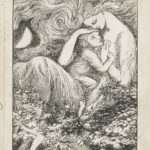
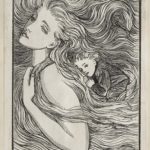
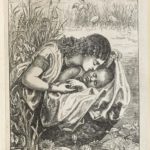
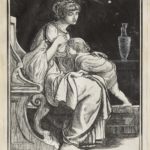
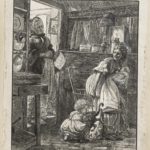
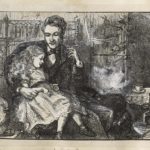
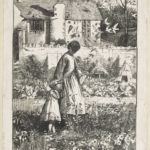
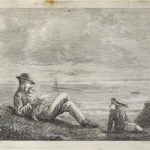
![Dalziel after John Tenniel, illustration for 'Pig and Pepper', in Lewis Carroll [Charles Lutwidge Dodgson], Alice’s Adventures in Wonderland](http://www.sussex.ac.uk/english/dalziel/wp-content/uploads/2016/07/MC10-20_p135.jpg-detail-3-150x150.jpg)
